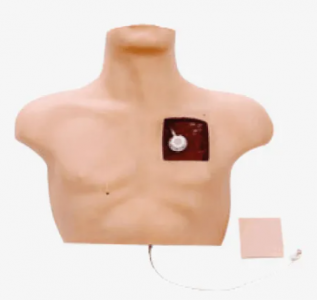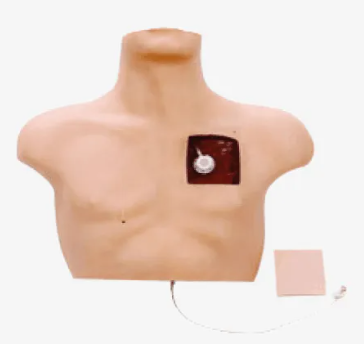ADA MED SUPPLY LIMITED
Phone:+86 19937901373
Tel:+86-0379-65160607
Email:adaanatomy@adaanatomy.com

Article tag: Venous intervention training model medical teaching model

Venous intervention training model plays a vital role in modern medical education and clinical skill training. The model is designed to simulate the real human venous system and provide a safe, controlled environment for healthcare workers to train for various venous interventional procedures.

First, the venous intervention training model is suitable for basic venipuncture and infusion operation training. By simulating the real venipuncture process on the model, the medical staff can learn how to accurately locate the vein, master the correct puncture technique, and how to deal with possible complications. At the same time, they can also perform infusion training on the model, learning how to adjust the infusion speed and volume according to the specific situation of the patient.
Secondly, the model is also suitable for training more complex venous interventional procedures, such as central venous catheterization. This procedure is usually used for patients who require long-term infusions, transfusions, or blood purification. In the model, the medical staff can simulate the entire catheterization process, including skin disinfection, the selection of puncture sites, and the insertion and fixation of the catheter. Through repeated practice, they can master this technique, improve the success rate of catheterization, and reduce the occurrence of complications.
In addition, the intravenous intervention training model can also be applied to the training of other intravenous intervention techniques, such as venous blood collection and intravenous drug injection. Although these operations seem simple, but in the actual clinical work also need medical staff with a high degree of professional skills and rich experience. By training on the model, medical personnel can become more proficient in these operational skills and provide safer and more effective medical services to patients.
In addition to the above operational training, the intravenous intervention training model can also be used to simulate the intravenous intervention operation in various emergency situations. For example, when a patient goes into shock or hemorrhages, medical staff need to quickly perform venipunction and infusion procedures to maintain the patient's vital signs. Through simulation training on the model, medical staff can be more familiar with the operation process and precautions in these emergency situations, and improve the ability to respond to emergencies.
In conclusion, the venous intervention training model is suitable for training a variety of venous intervention operations, including basic venipuncture and infusion operations, central venous catheterization, venous blood collection, and intravenous drug injection. This model can not only improve the professional skill level of medical staff, but also help them better adapt to the needs of clinical work.